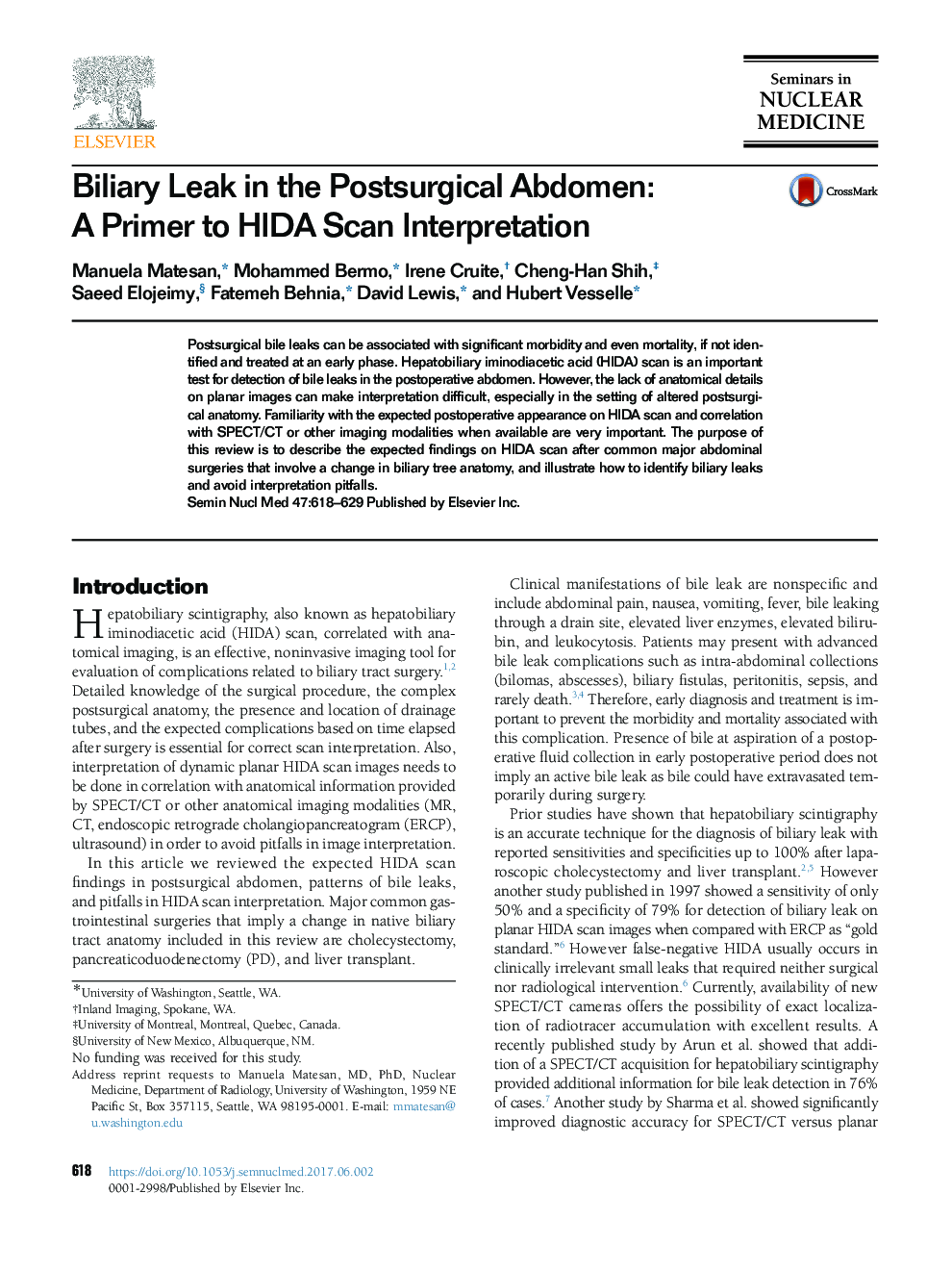| Article ID | Journal | Published Year | Pages | File Type |
|---|---|---|---|---|
| 5728314 | Seminars in Nuclear Medicine | 2017 | 12 Pages |
Postsurgical bile leaks can be associated with significant morbidity and even mortality, if not identified and treated at an early phase. Hepatobiliary iminodiacetic acid (HIDA) scan is an important test for detection of bile leaks in the postoperative abdomen. However, the lack of anatomical details on planar images can make interpretation difficult, especially in the setting of altered postsurgical anatomy. Familiarity with the expected postoperative appearance on HIDA scan and correlation with SPECT/CT or other imaging modalities when available are very important. The purpose of this review is to describe the expected findings on HIDA scan after common major abdominal surgeries that involve a change in biliary tree anatomy, and illustrate how to identify biliary leaks and avoid interpretation pitfalls.
